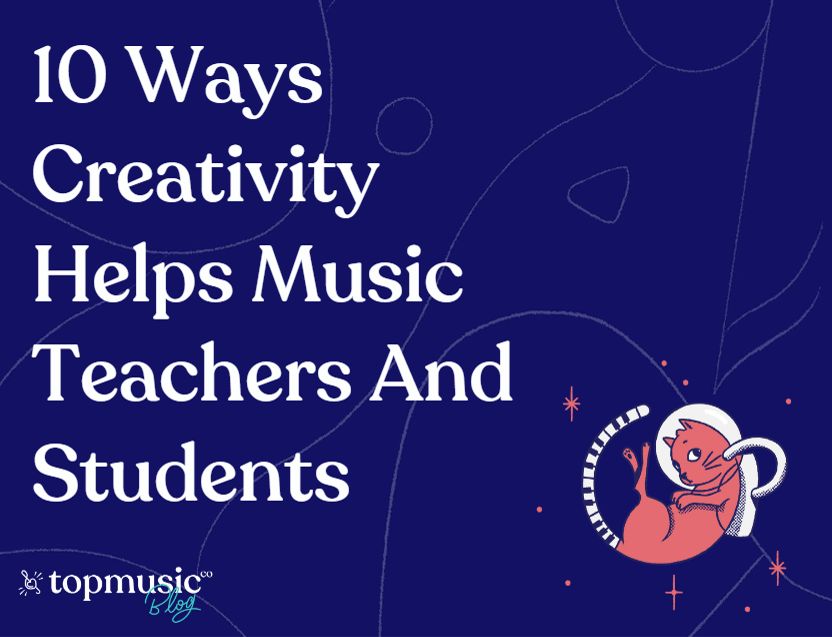You’ve probably heard us talk a lot about creativity when it comes to music lessons. But have you ever stopped to think about the benefits of being creative for both the music teacher and their students?
You’ve probably heard us talk a lot about creativity when it comes to music lessons. But have you ever stopped to think about the benefits of being creative for both the music teacher and their students?
We’re unpacking ten ways creativity will help you in your lessons!
Table Of Contents:
Encouraging students to be creative in their music lessons is a surefire way to increase their levels of engagement.
For example, instead of asking the student to simply play through a scale, ask them to improvise a melody using the notes of the scale. Put on a backing track to accompany them.
Wondering about other ways you can make playing scales more creative? We’ve got you covered!
Your student will have more fun, and in turn, you’ll enjoy teaching more engaged students!
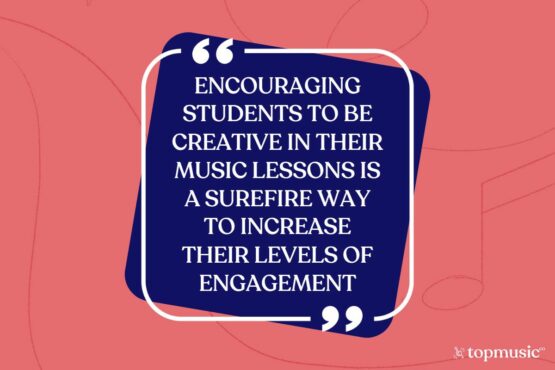
“I know the music says to hold the chord down for four beats, but I quite like how it sounds if I play two 2-beat chords in that bar. Is that okay?”
“Absolutely! Have you tried playing even more chords? What about one per beat? Try that out!”
Encouraging your students to explore the music and make it their own will stimulate all kinds of questions and discoveries! Replace the antiquated “teacher knows all” philosophy and share the musical exploration. You’ll start making connections not only in the music but also with your student.
If you’re looking for ways to kickstart your students’ creativity, check these out.
So many students focus on playing the right notes and making sure they don’t make mistakes. The attention to detail is great, but it can lead to a lack of appreciation for playing music as a means of self-expression.
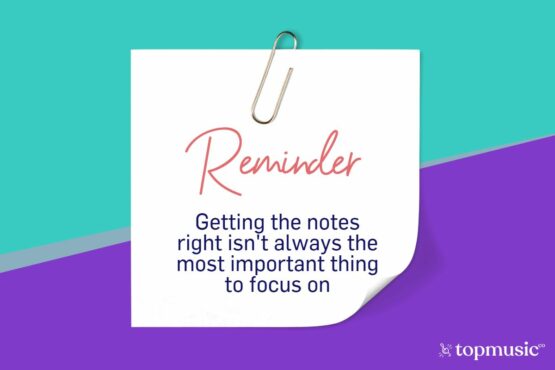
It can be as simple as allowing your student a couple of minutes at the beginning of the lesson to improvise a melody to represent the kind of day they had at school. Was it a slow-moving day that made them sleepy? Teach them how to play a slow melody in a minor key. You could play through inversions slowly and steadily, representing the moving between classes. Encourage them to be creative and think about how they can play their day.
It’s easy to get stuck into the routine of teaching a specific style of music. Perhaps the style is your forte, or you’ve discovered your students enjoy a specific genre of music. But you don’t want them to miss out on learning about a wider variety of music!
A simple yet creative way of introducing them to different styles:
Your student will be able to play the same piece in different styles. A Happy Birthday Tango, or maybe a Hot Cross Buns Boogie. This exploration can then lead to discussions about different genres of music. Play them different pieces or show them videos on YouTube. You’ll be surprised at how receptive they are to being introduced to new music!
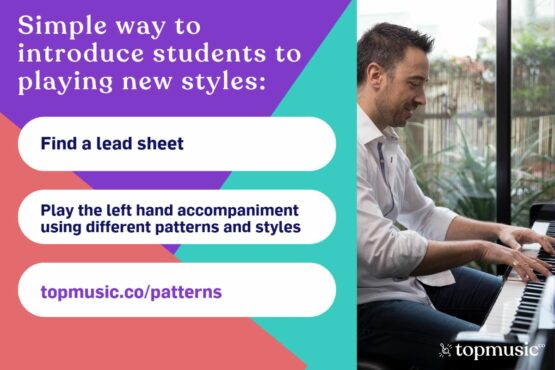
If your student has the ability to improvise or play from a lead sheet, they’ve opened up a world of performance opportunities. As well as performing in traditional settings like a concert hall, they could play in coffee houses, talent shows, churches, or jazz groups. They could accompany their friends as they sing or play in a band.
The tools they learn through creative activities aren’t just there for fun (although they definitely are fun!). They could be setting them up for exciting musical opportunities!
If you want more guidance on lead sheets, click here.
When your student is a certain age and ability, they could find themselves booking their first paid gig. This could be performing at a local event, providing background music in a restaurant or cafe, or accompanying a singer. Imagine the excitement they’ll feel!
Then imagine the joy you will feel when word gets out that there’s a creative teacher in town! We know from our own experience (and that of our TopMusicPro members’) that teachers retain students through the quitting years if they…
Retaining students and being known as an awesome music teacher who everyone wants lessons with will see an improvement in your income! But if you’re looking for other ways to attract students, check out our suggestions here.
Allowing your students to be creative with music off the page, will mean that they’ll become better interpreters of written music on the page.
That’s because rather than simply reproducing the notes on the page, creative students can understand how they came to be there in the first place.
Many music teachers worry that creative activities push teaching theory to one side. On the contrary! Creative activities allow you to demonstrate that music theory isn’t just “theoretical” but a set of practical tools for making music. Explain the theory, then allow the student to experience the theory.
An ideal music lesson would see a student working on their piece, then taking a section or idea and creatively exploring the why and how behind it. This is part of our Integrated Music Teaching approach. Learn more about that here.
No doubt you’ll have come across this before:
The left side of the brain is considered to be adept at logical, rational, and calculating tasks. The right side of the brain is best at artistic, creative, and spontaneous tasks.
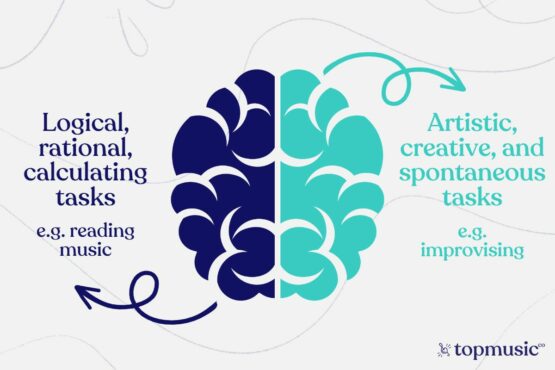
By incorporating creative activities with more traditional repertoire, your students will be utilizing both sides of the brain as they read music (left side of the brain) and improvise (right side of the brain)
As a music teacher, you’ll be able to keep those little grey cells active by keeping current and…
Creative music-making sensitizes the ears. Through improvising and composing their own music, your students will start hearing and analyzing how things sound and why they sound that way.
Why does their improvisation sound sad? That’s a great opportunity to teach tonalities.
That’s a funky rhythm they’re playing – can they work out what it would look like notated?
The phrase at the end of their piece doesn’t quite sound finished. Introduce them to cadences!
If you’re looking for creative ways to test listening skills, you’ll find some great suggestions in this free resource!
If you ask a student why a composer made a certain decision, they’ll probably look at you with *that* look and say, “I dunno. ‘Cause they wanted to.”
But if you ask your creative student who has improvised and composed and put thought into their own decisions, they’ll think about it.
They’ll appreciate that great music wasn’t always “just there.” The composers didn’t just write amazing music by accident. They had to make it up using the same techniques that creative musicians use today.
Your student will be able to find connections between their own improvisations and written music. They’ll start noticing things. Little patterns that are similar to things they’ve played around with. The same chord progressions. These connections lead to a greater understanding and appreciation of music.
If you’re looking for more ways to incorporate creative activities in your music lessons, TopMusicPro is the place for you!
With 50+ courses, downloads, lesson plans, and a community of like-minded and supportive teachers, your mind will be buzzing with new ideas on how to get your students to see music in a whole different light.
